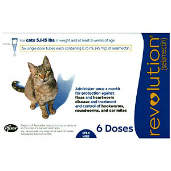Notoedric mange, or scabies as it is sometimes called, is a relatively rare disease caused by infestation of the skin with the parasitic mite Notoedres cati. Notoedres mites are closely related to the Sarcoptes scabei mites that cause scabies in dogs, so notoedric mange is sometimes falsely called sarcoptic mange. Most cats catch notoedric mange by coming into direct contact with another cat that has these mites living on its skin. Notoedres cati mites can survive for a day or so off of a host animal, so it is possible for a cat to pick them up from the environment, but this is not a common route of transmission.
"Cats with notoedric mange are incredibly itchy which is caused by the sensation of mites crawling around and the females burrowing into the skin."
The Symptoms of Notoedric Mange
Cats with notoedric mange are incredibly itchy. The sensation of the mites crawling around is one reason, but female mites also burrow into the skin to lay their eggs. This sets off an intense allergic reaction in many animals. Cats will bite and scratch more as a result, which bursts some of the mites releasing more allergens. This sets off a chain reaction of itching and scratching often leading to significant self-trauma of the skin.
Mites are attracted to a cat’s ear margins. Owners might first notice red, scaly skin and hair loss in this area, but with time symptoms can spread to the rest of the face and even the whole body.
Notoedric mange can not only spread from one cat to another but also to other animals including people, dogs, and rabbits. Usually, scabies is self-limiting under these circumstances, meaning that it will resolve on its own. However, individuals can be incredibly itchy when infected, so treatment is usually warranted.
Diagnosis, Treatment and Prevention
Notoedres mites cannot be seen with the naked eye, and the symptoms of intense itching and scratching around the ears and face are common to many other more commonly diagnosed diseases such as ear mites and allergies. To diagnose notoedric mange, a veterinarian will lightly scrape the surface of the skin in multiple locations and look at the material that is collected under the microscope. If he or she sees the mite, your cat has notoedric mange. In rare cases, skin scrapes may be falsely negative. If your veterinarian suspects that this is a possibility, he or she will go ahead and treat for notoedric mange despite the negative findings.

Thankfully, dealing with notoedric mange is now quite easy. Although it is not labeled for use against notoedres mites, Revolution applied to the skin appears to be a very safe and effective therapy. Some veterinarians prefer ivermectin injections. In the past, lime sulfur dips were the treatment of choice, but that is not the case anymore because the newer medications are so effective and easy to use.
Keep in mind that every cat in the home, even those without clinical signs, should be treated to prevent animals from passing the mites back and forth and reinfesting one another. Bedding, collars, and other materials that may harbor large number of mites should also be washed.
The monthly use of Revolution is a good way to prevent notoedric mange as well as other parasitic diseases in cats. Talk to your veterinarian about what parasite control measures are best for your situation.
Sources
http://pets.webmd.com/cats/cat-mange-mat-scabies
The above is provided for information purposes only and should not be used for the diagnosis or treatment of any condition.
This information does not cover all possible variables, conditions, reactions, or risks relating to any topic, medication, or product and should not
be considered complete. Certain products or medications may have risks and you should always consult your local veterinarian concerning the treatment of
your pet. Any trademarks are the property of their respective owners.